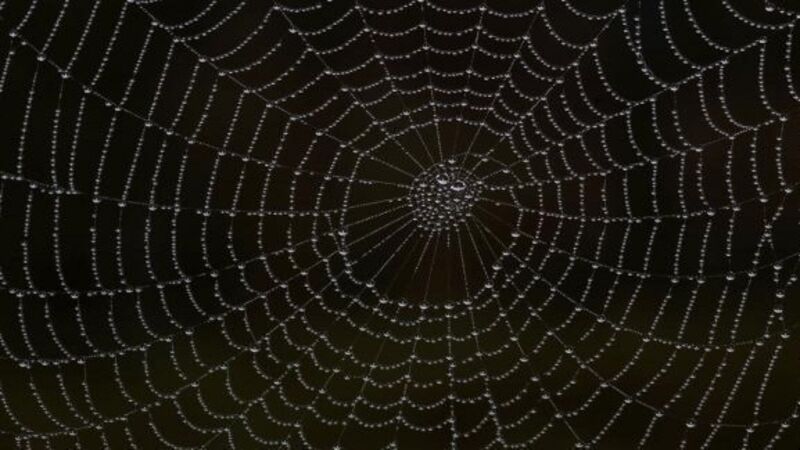Amazing quality of cobwebs

It was a misty morning and the web was outlined by tiny water droplets which made it easier to admire the intricate geometric design the spider had created.
I didn’t see the architect but the web was about twice the size of my hand.
Spider webs tent to be about 20 times the size of the spider that makes them, so this was quite a substantial creature.
I then got into the car and drove down to the village to do some shopping.
In all, I was driving for about half an hour at a variety of speeds so I was quite surprised when I got home to discover that the web was more or less intact.
The slipstream rushing past the wing mirror had blown off all the water droplets but only broken a few strands in the web.
I went in to the computer to try and find out a bit more about webs on the web.
They are extruded from spinnerets at the end of the abdomen and most spiders have quite a few of these.
Each pair of spinnerets is capable of producing different types of web — some species can produce up to eight different types.
Some are sticky for catching prey, some fluffy for wrapping it up and some are extra strong and without glue for the spider to walk on.
To first bridge the gap between the mirror and the body of the car the spider had extruded a special type of web with a drop of glue on the end.
It had floated it out on the breeze and, when it landed in the right place, walked out gingerly along it, strengthening it as it went, until it reached the other side and then used the tightrope it had created as the base from which to start the construction.
The web material is what is called a proteinaceous spider silk and it is very strong, stronger than steel of the same gauge and many times more elastic.
Despite the fact that spiders have a very protein-rich diet, producing a full web is extremely metabolically demanding.
Because of this, most spiders recycle the protein by eating old webs. This happens if the web is damaged or when the stickiness which is used to catch prey wears off.
The web also conducts electricity and it appears that most flying insects develop a static charge which augments the ability of the sticky threads to catch and hold them.
The amazing properties of the material are currently being investigated by scientists with a view to copying them in such diverse products as bulletproof vests and artificial tendons.
The research sounds a bit scary because they are genetically modifying mammals to produce the proteins.










